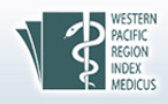Abstract:
Objective To explore the influence of moderate-intensity exercise prescription on the physical fitness of female college students, so as provide a reference for improving the physical health management of female college students through college PE education. Methods From September to December 2019, two female classes of grade 2019 were randomly selected from Hebei University of Technology in Tianjin as the research objects, with 45 students in the intervention group and 42 students in the control group. According to the American Academy of Sports Medicine's recommendation and the results of pre-exercise assessment for students in the intervention group, the physical fitness coach designed the moderate-intensity exercise prescription, and the exercise prescription intervention was carried out in the intervention group for three times a week for 16 weeks. The students in the intervention group self-monitered their exercise load after each exercise, and the physical fitness coach made individual adjustments to the exercise prescription every 4 weeks according to the self-monitoring results. Before and after the intervention, BMI, vital capacity, 800-meter running and sitting forward flexion were measured in the two groups respectively. At the end of the intervention, 5 students in the intervention group were randomly selected for interview. Results After the intervention, BMI, 800 m and sit forward in the intervention group were (20.41 ± 1.45)kg/m2, (3 376.32±389.21)mL, (228.16±17.00)s and (15.63±4.36)cm, respectively. The control group were (22.60 ± 2.38)kg/m2, (2 911.16±369.73)mL, (238.11±11.86)s, (15.47±7.45)cm respectively. The vital capacity, 800 m and BMI results of intervention group were better than those of the control group(t=-5.22, 5.71, -3.15, P < 0.05). Compared to those before intervention, in the intervention group, BMI was decreased by 2.69 kg/m2, while vital capacity and were improved by 537.64 mL, the time for 800 m was reduced by 16.00 s, respectively. However, there was no significant difference in the excellent rate of vital capacity, 800 m and sit forward before and after the intervention group(χ2=3.20, 0.76, 3.63, P>0.05). During the interview of the intervention group, the students believed that exercise prescription improved the physical health level; the encouragement and support of students and coaches, supervision and guidance of the coach were of great help to complete the whole intervention. Conclusion Regular and continuous moderate intensity exercise prescription can improve the physical health level of female college students; exercise prescription health education, supportive environment and good organization can improve exercise compliance and effect.











